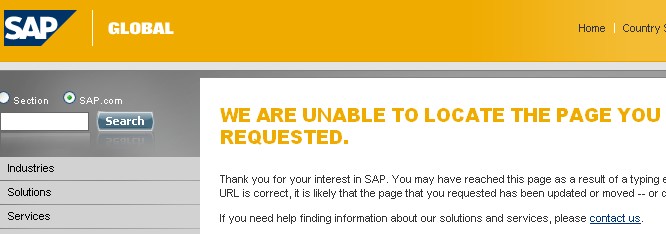- Type in your corporate blog’s URL at My.ComMetrics.com and track your blog’s performance.
A few days back I made a first attempt to define what criteria one might want to use and what not to describe a corporate blog:
Fortune 500 corporate blogging – Boeing, Chevron, Sun and Wal-Mart
The post got a few insightful comments that you may want to check out.
What it already showed is that things have gotten a bit more complex since 2004 when Fredrik Wackå published this definition 2004-06-18 – definition of a corporate blog:
“… A corporate blog is a blog published by or with the support of an organization to reach that organization’s goals…”
However, while one may have support to blog and blog about one’s work and employer, this does not mean it is a corporate blog. An example is Jeremiah Owyang – being a corporate blog evangelist. While Jeremiah began blogging under somebody else’s domain, he has in the meantime switched to his own domain. Nevertheless, he neither blogs under his current employer’s domain nor does the employer own the copyright… and so forth.
These are just a few of the criteria I use to decide if a blog is corporate blog or not as outlined here under Fortune 500 corporate blogging.
Today I want to address some additional issues and criteria that might help us in defining what a corporate blog is and what it might not be.
4 What is the difference between a dormant blog and one that is alive and vibrant?
While this is a difficult question to answer, regularly posting new content is one sign of a vibrant blog. Moreover, while your corporate blog’s followers or readers may not want to be overwhelmed with frequent posts, this does not imply being dormant for weeks or months is a viable option.
Instead, a new post every 7 to 9 weeks is probably the minimum to keep your followers and readers happy. Some would even argue that posting once each week is the minimum (see upcoming post where we will address this).
Numerous corporate blogs seem to fail this criterion. One example is the Nike basketball blog. Sometimes it does not have a new post for 13 or more weeks. In fact, it can take even longer giving one the impression the blog has gone dormant. However, Nike is in good company. Quite a few Fortune 500 corporations have dormant blogs, such as this one from Texas Instruments.
Whatever the objectives you wish to pursue with your corporate weblog, achieving this without posting new content in somewhat regular intervals is not the road to success.
5 Join the conversation
Social media means the reader can participate in the conversation. In turn, the corporate blog should provide people with the option to leave a comment and, thereby, join the conversation.
A few politicians seem to fail to grasp this basic concept (see politicians blogging – ropes to skip) by not offering their readers a chance to comment (e.g., German parliamentarians). The Russian president Dmitry Medvedev has a blog including a video one, nonetheless, you can try to join the conversation but you will not find comments written by readers anywhere on this blog.
Nevertheless, some corporate blogs from FT Global 500 companies do not do better. Readers can read and subscribe to the RSS feed but joining the conversation is impossible. This is something that needs correcting.
A blog that fails here fails an important criterion. How much people may participate by commenting about your corporate posts is one way to get input and feedback. Both are vital for improving one’s products and services. Why would one neglect this marvellous opportunity to improve is a mystery to me.
6 Social media means one has to give up some control
2006-09-09 Cornelius Puschmann pointed out that SAP is restricting access to their executive blogs.
When entering http://www.sap.com/community/pub/blogs.epx the non-registered user is served the following page:

Cornelius Puschmann asked SAP about this policy during 2006. You can see the answer he got from SAP here:
Cornelius Puschmann – SAP’s response to my criticsm
SAP is still trying to accept that social media does not allow one to exert total control. SAP has not changed its restrictive access policy to its executive blogs to this day.
Hence, these blogs are not accessible to the public. Representing the corporation means being accessible to the public and offering RSS and e-mail feeds without first requiring interested parties to register. Restricting access is not what social media is about.
This seems very detrimental to the blogosphere mantra. Let us hope that SAP sees the light one of these days.
Watch this space for getting to read about another three criteria we use to decide if a blog is corporate or not.
 The FT ComMetrics corporate blog index ranks FT Global 500 corporate blogs
The FT ComMetrics corporate blog index ranks FT Global 500 corporate blogs
One of the best rankings of corporate weblogs on the internet ===> you should sign-up for My.ComMetrics.com – it is free
You may also want to look what Nils wrote about corporate blogs
Comments on this entry are closed.